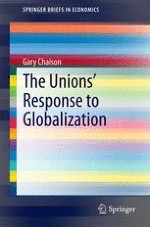

Renew Sust Energ Rev 42:1123–1131īalsalobre D, Álvarez A (2016) Economic growth and energy regulation in the environmental Kuznets curve. Renew Sust Energ Rev 47:732–745Īzam M, Khan AQ, Zaman K, Ahmad M (2015b) Factor determining energy consumption: evidence from Indonesia, Malaysia and Thailand. Energy Econ 31:641–647Īzam M, Khan AQ, Bakhtyar B, Emirullah C (2015a) The causal relationship between energy consumption and economic growth in the ASEAN-5 countries. Afr J Bus Manag 8(20):962Īpergis N, Payne JE (2009) Energy consumption and economic growth: evidence from the commonwealth of Independent states. Energy Policy 105:386–397Īmzath A, Zhao L (2014) A study of the relationship between carbon emission and tourism development in Maldives. Álvarez A, Balsalobre-Lorente D, Shahbaz M, Cantos JM (2017) Energy innovation and renewable energy consumption in the correction of air pollution levels. Renew Sust Energ Rev 15(6):3243–3251Īlgieri B (2006) International tourism specialization of small countries.

Br J Econ Financ Manag Sci 7(2):187–202Īlam MJ, Begum IA, Buysse J, Rahman S, Huylenbroeck GV (2011) Dynamic modeling of causal relationship between energy consumption, CO2 emissions and economic growth in India. An important factor that can be studied is the role of the father’s absence as a factor shaping the educational choices of the students, as there were findings that might suggest such an approach.Ahiawodzi AK (2013) Tourism earnings and economic growth in Ghana. Additionally, future researchers should consider studying other factors that might influence student’s choices such as age and demographics. In general, the study outlines the role of the parent’s in shaping the language of choice and accordingly the careers of their children, which points to the importance of their education as a factor that can be effected through the current generation. The findings of the study also suggest that the impact of the parent is identical for both genders, and as there are existing disparities in school choices between boys and girls (Munshi and Rosenzweig), it can be implied that there other factors that influence such disparity other than parent’s education and medium. Results of this study indicated there were statistically significant differences between parent’s education and medium and the student’s choice of instruction language, yet there was no statistically significant difference between the parent’s education and the gender of the student regarding their choice of instruction language.įor student’s language of choice, the mother’s medium to affect significantly higher the student’s medium which might suggest that due to women not participating in the labor market (Munshi and Rosenzweig), they spend more time with the children affecting their choice of language. The paper states that the education and the medium of the parents affect the language of instruction choice of the students. In addition, this paper analyzes the role of gender in establishing the relation between parents and the different impacts on boys and girls. student’s choice of language of instruction. father’s- mother’s education and father’s-mother’s medium, and the dependant variable, i.e. In that regard, the data used in the article were analyzed using STATA to establish a relation between the independent variables, i.e. Assessing the relation of the parents’ education on student’s choice of language of instruction in Bombay is an important aspect that visualizes the impact of globalization in shaping career patterns. gender career choices.Īn important aspect of the research was the obtained data of the education and the medium of the parents in Bombay over the last twenty years. In the article “Traditional Institutions Meet the Modern World: Caste, Gender, and Schooling Choice in a Globalizing Economy” by Kaivan Munshi and Mark Rosenzweig, the authors narrowed the gap on the effect of the forces of globalization on one aspect of established patterns of traditional institutions in Bombay, India, i.e. In countries where traditional institutions, such as community networks, play a major role, such transitions along with their effect were not sufficiently observed and analyzed.


 0 kommentar(er)
0 kommentar(er)
